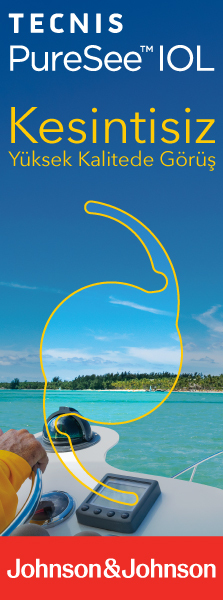TJ-CEO
2011 , Vol 6 , Num 1
Effect of Central Corneal Thickness on the Efficacy of Topical Latanoprost Therapy in Cases with Primary Open Angle Glaucoma
1Rize Üniversitesi, Tıp Fakültesi, Göz Hastalıkları A.D., Rize, Yrd. Doç. Dr.2KTÜ, Tıp Fakültesi, Göz Hastalıkları A.D., Trabzon, Yrd. Doç. Dr. Purpose: To evaluate the effect of central corneal thickness (CCT) on the efficacy of topical latanoprost therapy in cases with primary open angle glaucoma (POAG).
Materials and Methods: In this prospective study, clinical findings of 54 eyes of 33 POAG patients were investigated. In all eyes, CCT was measured by ultrasonic pachymetry and intraocular pressure (IOP) by noncontact-tonometry and then the eyes were divided into thin (≤540 micron) and thick (>540 micron) cornea groups. All eyes were treated with latanoprost 0.005% and the final IOP levels were measured at fourth week. CCT and IOP measurements in two groups were compared statistically and correlations between CCT and IOP decrease obtained with treatment were investigated.
Results: In thin cornea group (n=28), mean CCTs were 525.07±18.06 micron and baseline IOP levels were 25.25±2.19 mmHg. These levels were 569.62±22.14 micron and 26.31±2.74 mmHg respectively in thick cornea group (n=26). The two groups did not differ in terms of baseline IOPs (p=0.122) but in CCTs (p<0.0001). In terms of mean IOP measurements at fourth week, the two groups were statistically different from each other (18.07±2.75 mmHg, and 22.15±3.77 mmHg respectively, p<0.0001). There was a significant correlation between CCT measurements and levels of IOP decrease obtained with treatment (r=-0.667, p<0.0001).
Conclusion: IOP lowering effect of latanoprost is affected by CCT. Therefore, CCT measurements may be useful in interpreting clinical efficacy of latanoprost. Keywords : Biometry, cornea, glaucoma, latanoprost, treatment outcome





